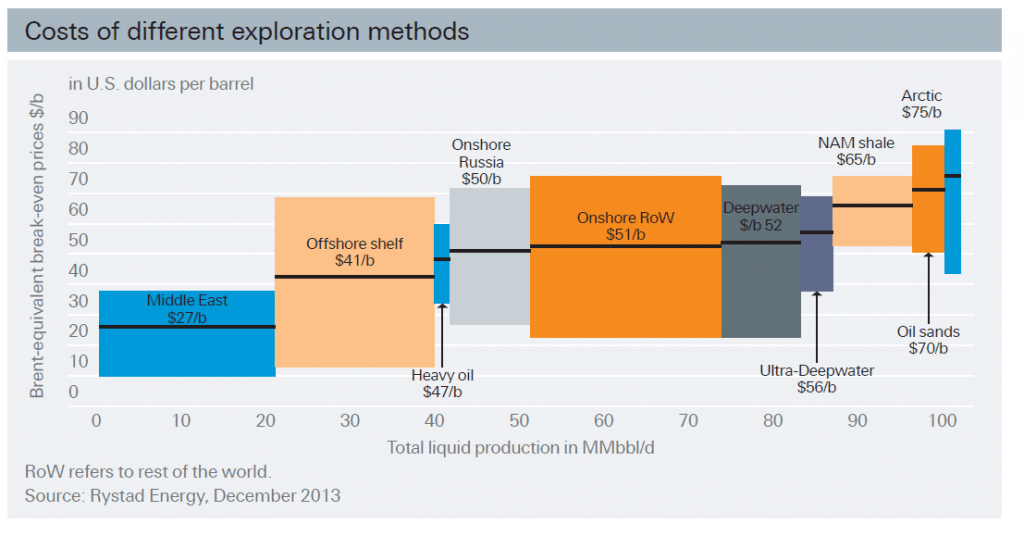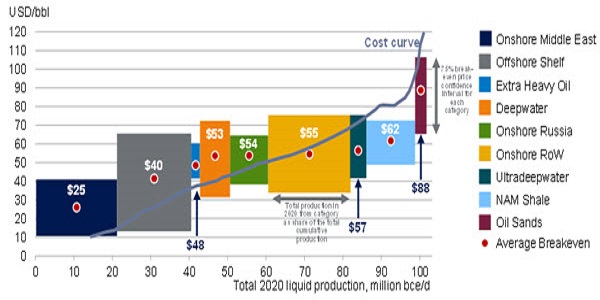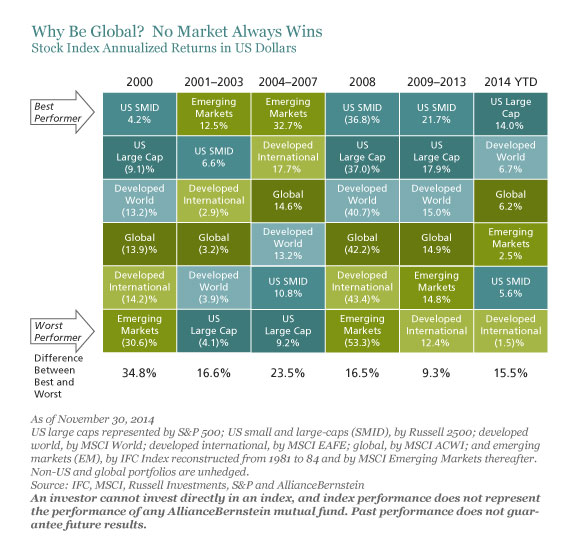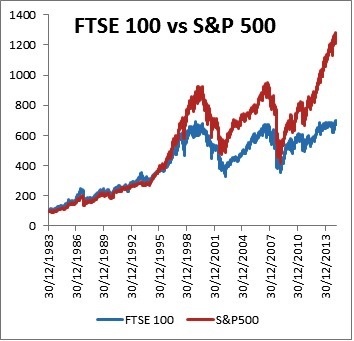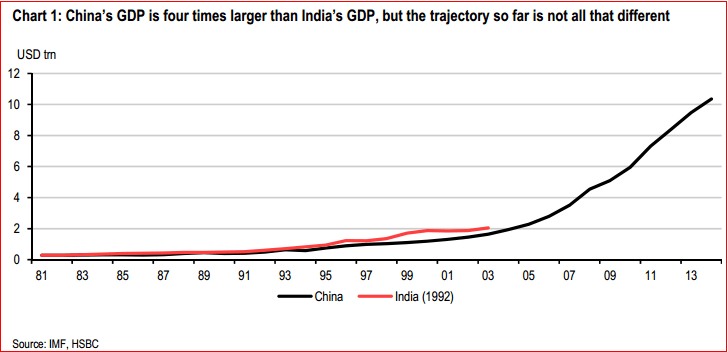The following chart shows the extraction cost of oil by various methods:
Click to enlarge
Source: CIO View Special, Feb 2015, Deutsche Asset & Wealth Management
Middle East oil the cheapest while production in the Arctic Ocean is the most expensive.
Update (12/22/15):
Source: Oil and gas companies: the carbon risk, Schroders
